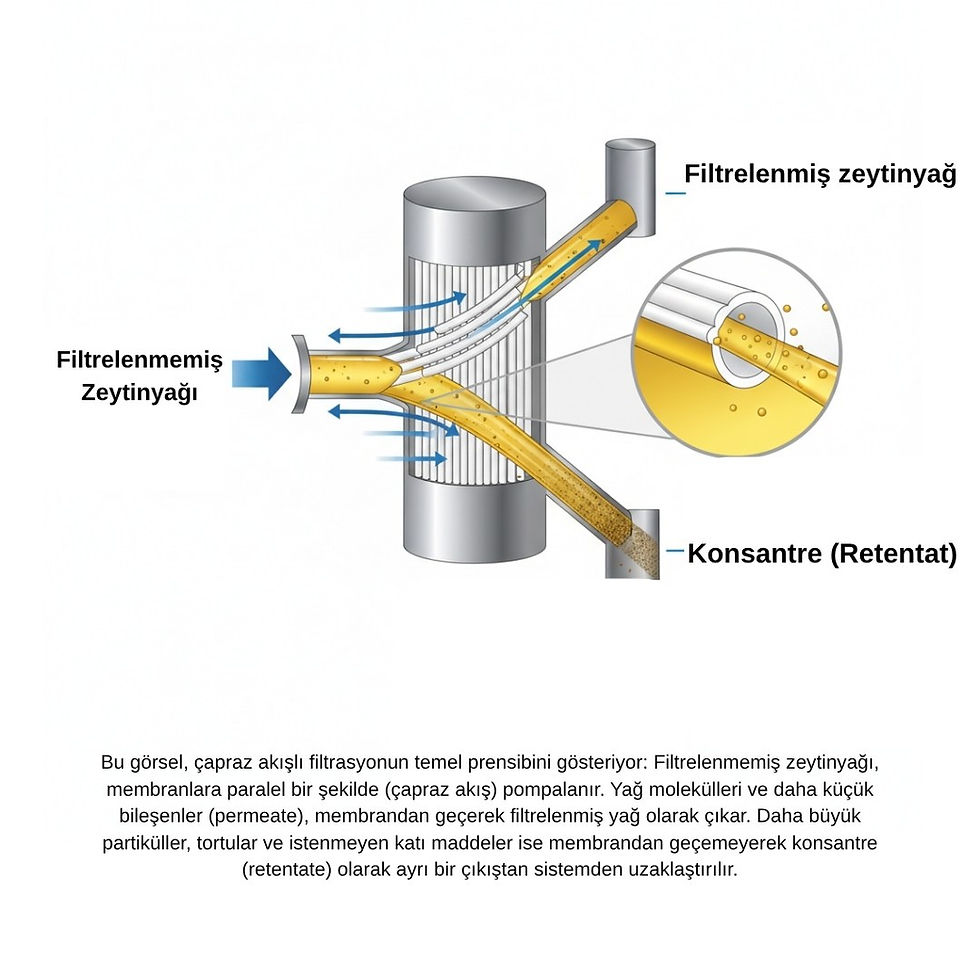Confused About Buying Olive Oil?
- fethi çelik

- Apr 8
- 3 min read
Updated: Apr 9
Confused About Buying Olive Oil?
This Article Will Make Things Much Easier for You!
If you find yourself asking questions like “Which type is best?”, “Extra virgin or Riviera?”, or “What does acidity mean?” while shopping for olive oil at the store or online, you're not alone. Labels can be confusing — but don’t worry!
In this article, we explain the different types of olive oil, their differences, and which type to use for what, all in simple and clear language. This way, you’ll make a healthy, flavorful, and informed choice much more easily.
Keep reading — let’s find the best olive oil for your kitchen together!
The Unique Naturalness of Olive Oil
Olive oil is the only vegetable oil that can be consumed directly without any chemical processing, obtained solely by mechanical pressing of olives harvested from the tree.
This makes it fundamentally different from other vegetable oils such as sunflower oil, corn oil, or canola oil — which must undergo refining before they are suitable for consumption. These oils can only be used after passing through chemical and physical processes.
Olive oil, on the other hand, is nature’s purest oil. Especially extra virgin olive oil is considered the most valuable in terms of health. Its flavor, aroma, and nutritional content make it an indispensable part of healthy kitchens.
According to the Olive Oil Regulation in Turkey, the main categories are:
Virgin Olive Oils:
These are obtained solely through mechanical or physical means (like washing, decantation, centrifugation, filtration) without altering the oil's natural properties. No solvents or re-esterification processes are used. The categories include:
Extra Virgin Olive Oil (Natürel Sızma):Suitable for direct consumption. Free acidity (as oleic acid) not more than 0.8g per 100g.
Virgin Olive Oil (Natürel Birinci):Also suitable for direct use. Free acidity not more than 2.0g per 100g.
Lampante/Ham Olive Oil:Free acidity more than 2.0g per 100g, not suitable for direct consumption; requires refining or technical use.
Refined Olive Oil:
Obtained by refining lampante olive oil using methods that don’t alter the natural triglyceride structure. Free acidity: max 0.3g per 100g.
Riviera Olive Oil:
A blend of refined olive oil and virgin olive oil. Free acidity: max 1.0g per 100g.
Flavored Olive Oil:
Made by adding herbs, spices, fruits, or vegetables to olive oil; must still meet the characteristics of its base category.
Olive Oil Types at a Glance:
Extra Virgin Olive Oil
Acidity: Max 0.8%
Flavor: Rich, fruity, fresh olive taste
Use: Perfect for salads, breakfasts, and raw consumption
Virgin Olive Oil
Acidity: 0.8% – 2%
Flavor: Balanced, slightly pungent
Use: Ideal for daily cooking
Riviera Olive Oil
A mix of refined and virgin olive oils
Acidity: Up to 1% (acid level reduced chemically during refining)
Flavor: Mild, odorless
Use: Suitable for frying and hot meals
Refined Olive Oil
Chemically treated to reduce acidity
Acidity: Up to 0.3%
Flavor: Neutral
Use: Industrial kitchens, high-temperature cooking
Pomace Olive Oil
Extracted from the olive pulp (pomace), usually refined
Flavor: Low aroma
Use: Mass food production and industrial use
In Summary:
For home use, the healthiest and most natural option is extra virgin olive oil. It is the highest quality and least processed. It is followed by virgin olive oil, which is still natural and suitable for direct consumption.
Riviera olive oil, often seen on store shelves and generally cheaper, is produced by mixing refined and virgin oils. As it has undergone processing, its nutritional value and aroma are significantly lower than natural oils.
To be honest, Riviera olive oil is no different from corn or sunflower oil in my view. It might look similar in price, but there's a big difference in quality and content.




Comments